OFF-TOPIC (70)
By:
June 29, 2025
Off-Topic brings you over-the-transom, on-tangent essays, dialogues and subjective scholarship on an occasional, impulsive basis. This time, a seriously unencrypted talk about our next few five-minutes-from-nows…
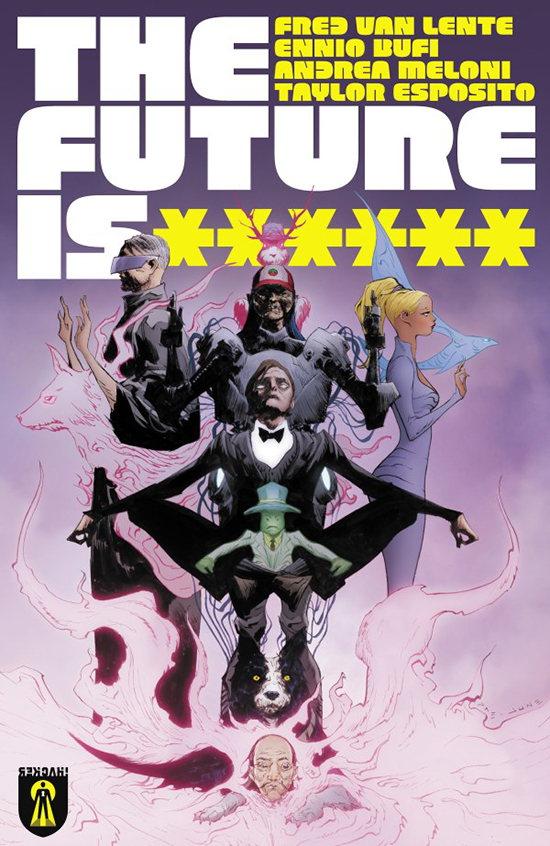
Reality is something we’ve all never really wanted to agree on, though we’ve always been able to agree it can use improving. But whether that means simply embellishing as it suits us or making changes that benefit everyone is where the arguments start again. We fill in our own blanks, and befitting that the last word is left untyped in The Future Is ******, a new graphic series by writer Fred Van Lente and artist Ennio Bufi about hackers operating on a liminal frontier of consensual constructs and contested truth.
The comic’s future is assured, with a rare five-year/60-issue commitment from its publisher, which is in fact not a comics publisher but a white-hat hacker/cybersecurity company, so the creative team have already jumped one mainstream reality (the ever-shaky comics market) to find a footing in something more secure. Black Hills Information Security / REKCAH Publishing is a haven for creative endeavor and individual thinking, and the future for this project already looks bright, with a thrilling and witty graphic-novel-length first issue out in May and an already sold-out (but on its way to reprinting!) second, regular-size issue this month. The stories are threaded with links to digital problems readers can solve to hack the matrix firsthand, and intricate, inventive storylines and character arcs that invest you organically.
Mysterious renegade “Wheeler” (who has ceased being a… cog in military-corporate security culture and now seeks to sabotage the moguls and oligarchs making your life miserable, though his motives and ethics remain as opaque as their bank accounts) recruits other social opt-outs for the vigilante “Black Mountain” crew, including ex-Olympian Martina De León, ex-astronaut Sally Chu, paradoxically ultra-sheltered expert systems infiltrator Eli Nilsson, and independent virtual personality “Art” (a next-level A.I. who adopts the actual identities of famous painters but who, perhaps suffering some imposter syndrome, travels with an organic support dog, “Arf”). They foil a messianic CEO with a moon-based operation to literally bleed the poor for iffy eternal-youth schemes, a personal-prison innovator using his software to virtual stalk his own wife, and other abusers of technology’s potential. Nobody is not immersed and implicated in the ubiquitous, literally implanted Augmented Reality landscape all the characters move within, but Wheeler’s band press their way through the surreal frames of existence fabricated by the powerful to make the world a little safer for the level of reality most of us still haveto live in.
I infiltrated a few platforms to spring questions on Van Lente leading up to the first issue/novel’s launch, with a vow to follow up once the 60-issue system was up and running; what unfolds below are our chats by phone, Zoom, Google Meet and Facebook, interspersed with extra Q&A from the cutting rooms of those and one more long-form conversation we had the day after the book came out. I’ve thrown sequence to the wind in favor of thematic relevance; the Future is just the Past plus creative curation…
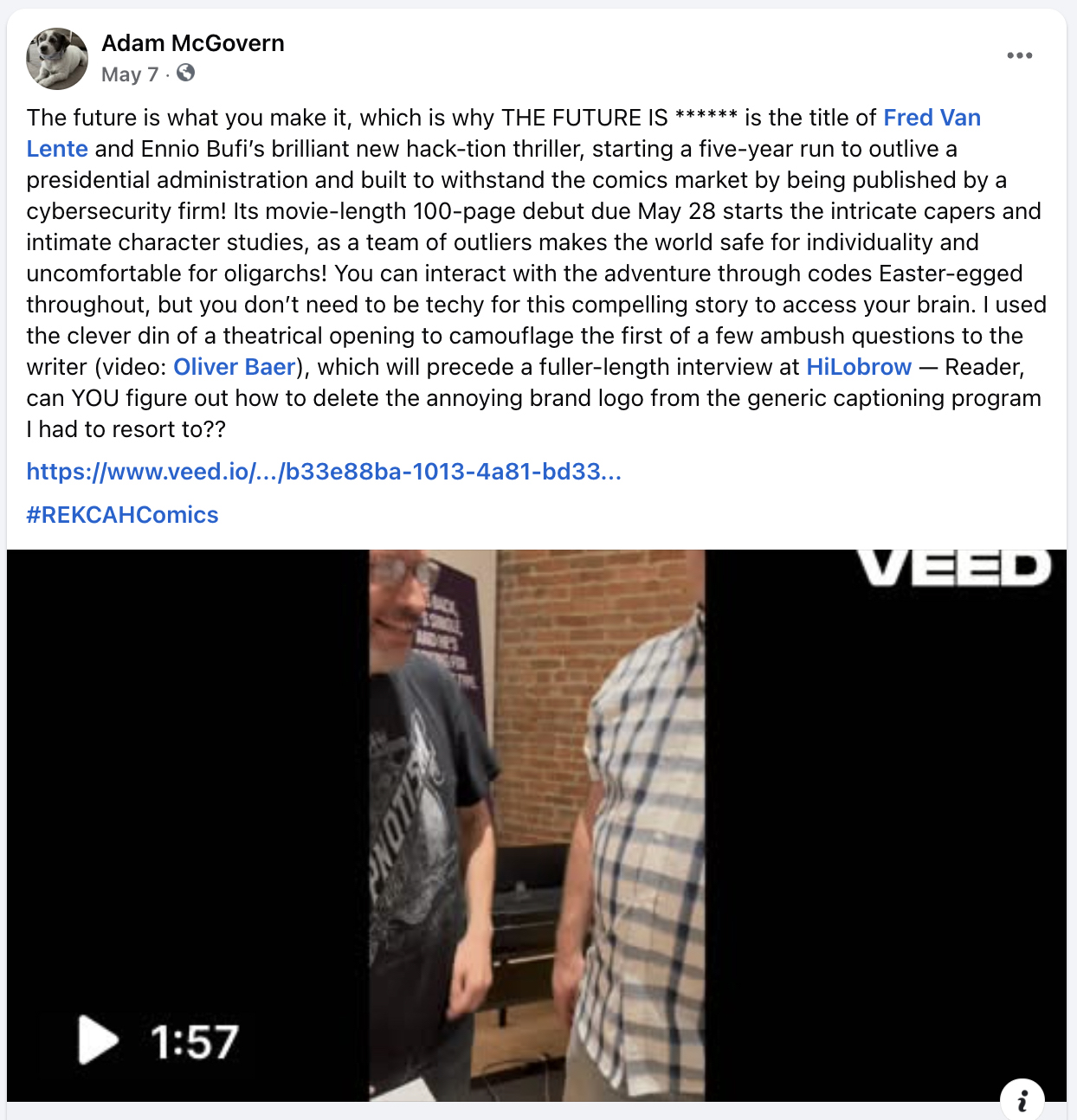
HILOBROW: TFI*’s narrative feels remarkably un-speculative, more like the everyday of 50 years from now. It’s important not to be dazzled by the surface differences that scream “futuristic period piece” and focus on the lived-in details that really place you in the time being portrayed. What are the anchors you hold on to in traveling into these future times in a way that will feel truthful?
VAN LENTE: One of the big rules I’ve held to is, technology tends to be cumulative, and not replacing things; we have cars but there are still horses, people still have stables, people still raise horses, people still ride horses; there’s someone out there cherishing their laserdisc collection, and I’m sure there’s someone out there with a Betamax collection. So all this stuff doesn’t just go away. It’s like the misguided people who denounce evolution by saying “how could evolution be true because there are still gorillas” — [laughter] big gotcha question right? So that’s sort of my attitude about this, which is that it’s just more stuff, on top of [current] reality and we’re trying to represent that. We have a fun storyline coming down the line about people who want to live in a retro-techno future, which is going to be living in the past, like our version of the Amish… except they all use Apple IIe’s.
I also wanted the future to be super relatable — [and I] feel like, this might just be my own failings as a science-fiction writer, I worry about my ability to come up with a science-fiction future that isn’t just a ripoff of some other person’s science-fiction future whether it’s Ridley Scott or William Gibson or the Cyberpunk 2077 videogame which I guess is Mike Pondsmith’s vision. I just try to stick with reality because frankly, not to flex here or anything, but I find a lot of genre writers don’t know reality very well; they’re really surprised… like Jack Skellington, “What’s this, What’s this??”
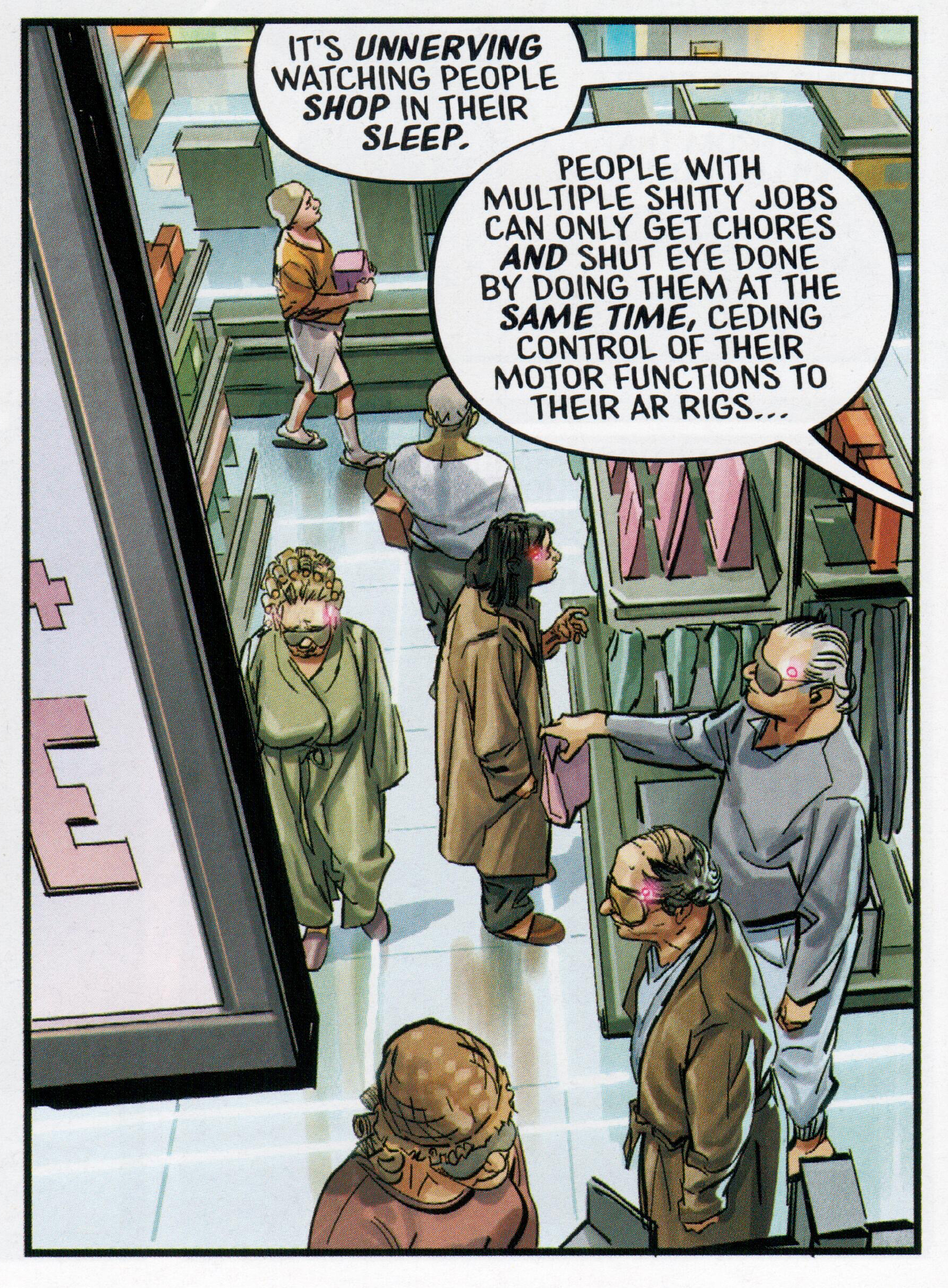
HILOBROW: The gorilla analogy is a great one, the way that there’s this unevenness to “progress”… more of a horizontality. Relatedly, it’s rare that sci-fi uses transformative technology as a context rather than just a gimmick. Our lives revolve around smartphones, but they’re not about smartphones. This is the first comic I’ve seen succeed in that since Time Before Time; time-travel in that book, and AR in yours, do “change everything,” but there’s also still an everything. How do you keep that balance, of the premise not overtaking the storytelling?
VAN LENTE: Part of it is simply that this is a comics company owned and run by hackers, so you don’t want a situation where you have a comic with a bunch of people typing furiously, like, “I’ve gotta stop the virus with this new code” [laughter]. So a lot of the AR is a storytelling contrivance and convenience for the comics, to make something that fundamentally isn’t visual, visual. That has a lot to do with it. My other favorite story about… there’s an old story about Akira Kurosawa, who was asked about a shot in Ran — I’m a hundred-percent certain this story is apocryphal, so I’m not sure it’s Ran they’re actually referring to — but [they asked] “Why did you frame it that way, with the samurai army thundering down the valley on their horses?” And he goes “Well, if I turned the camera a couple of inches to the left you’d see the airport, and if I turned the camera a couple of inches to the right you’d see the Sony factory. So I didn’t have a choice.” A lot of this stuff is just necessity being the mother of invention.
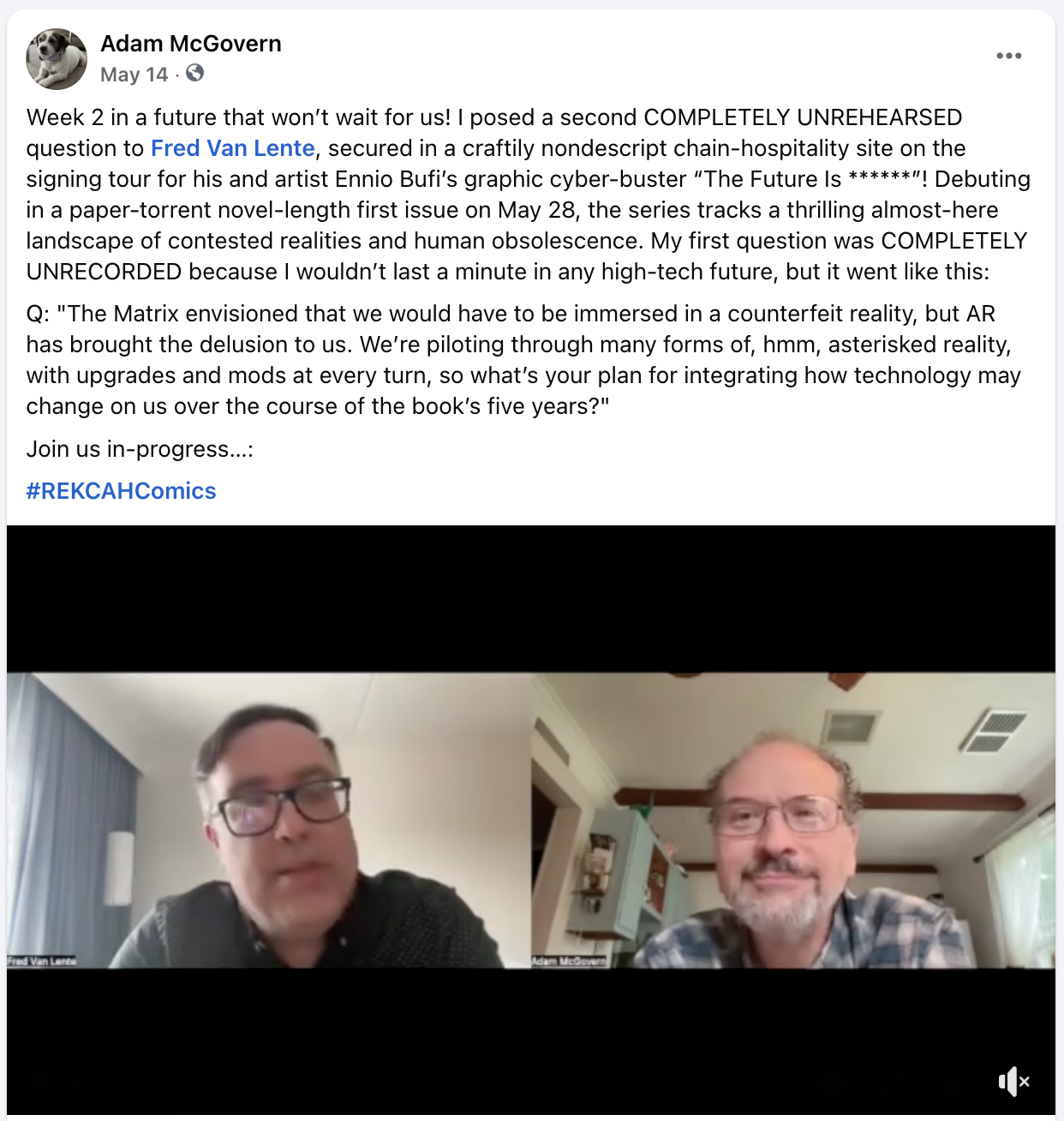
HILOBROW: Were you a fan of Mark Russell’s PREZ? The corporate CEOs have hologrammic mascot heads which I see as the precursor of some of the people in TFI*, out in their sweatsuits or worse, wearing their avatars… it’s the logical conclusion of doing zooms with no pants on.
VAN LENTE: Yeah, and the skins get crazier and crazier, there’s one character called The Stray who never takes his off.
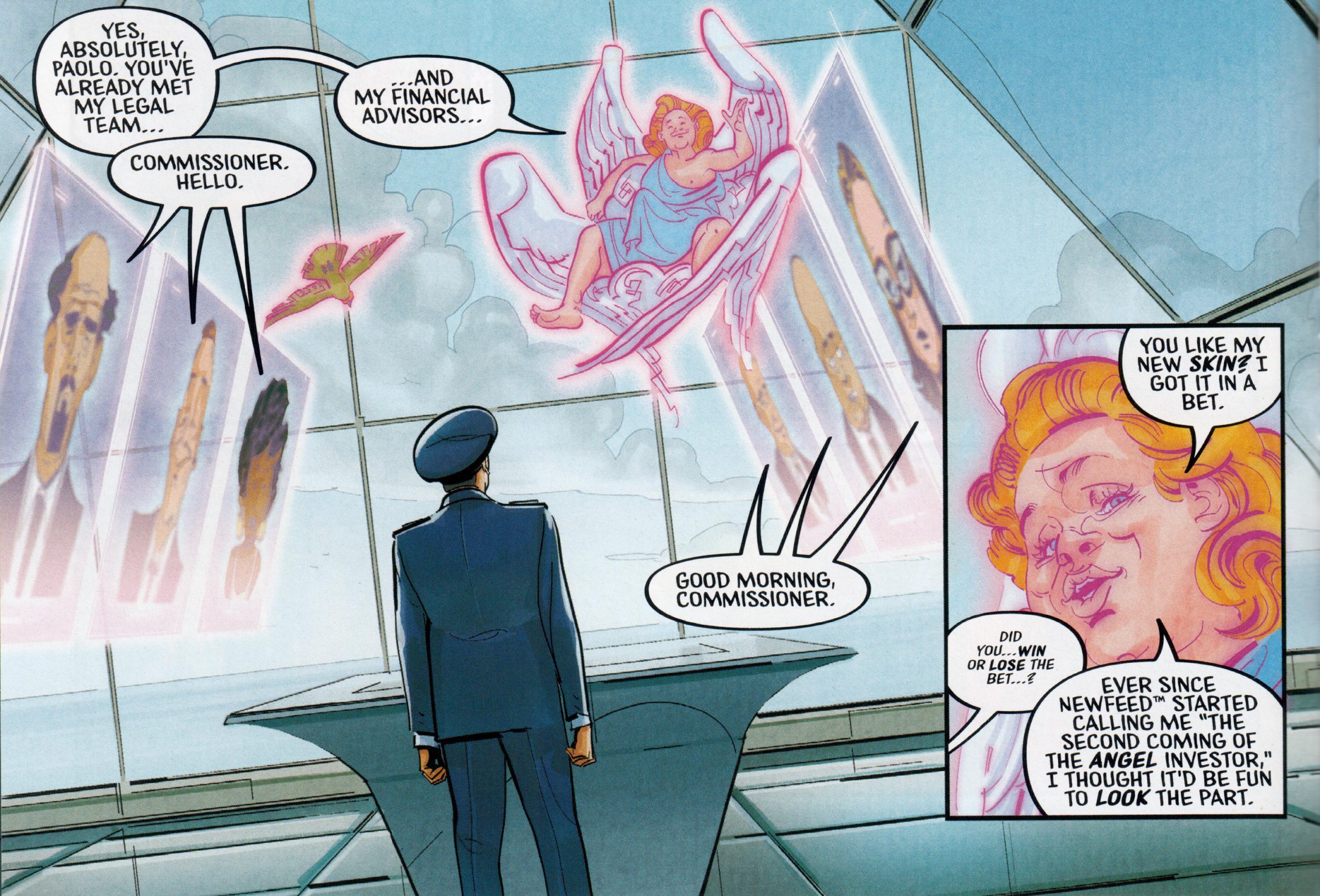
HILOBROW: The forthcoming issue focused on the character Martina foiling a private prison app that follows you around is brilliant, but I actually had to read it in two or three sections because, working in the immigrant-rights field, private prisons are a subject that’s keeping me traumatized daily, and I’m not even in one. Is there an element of catharsis in gaming current social ills out to their worst conclusion and finding a way to undermine them in these stories?
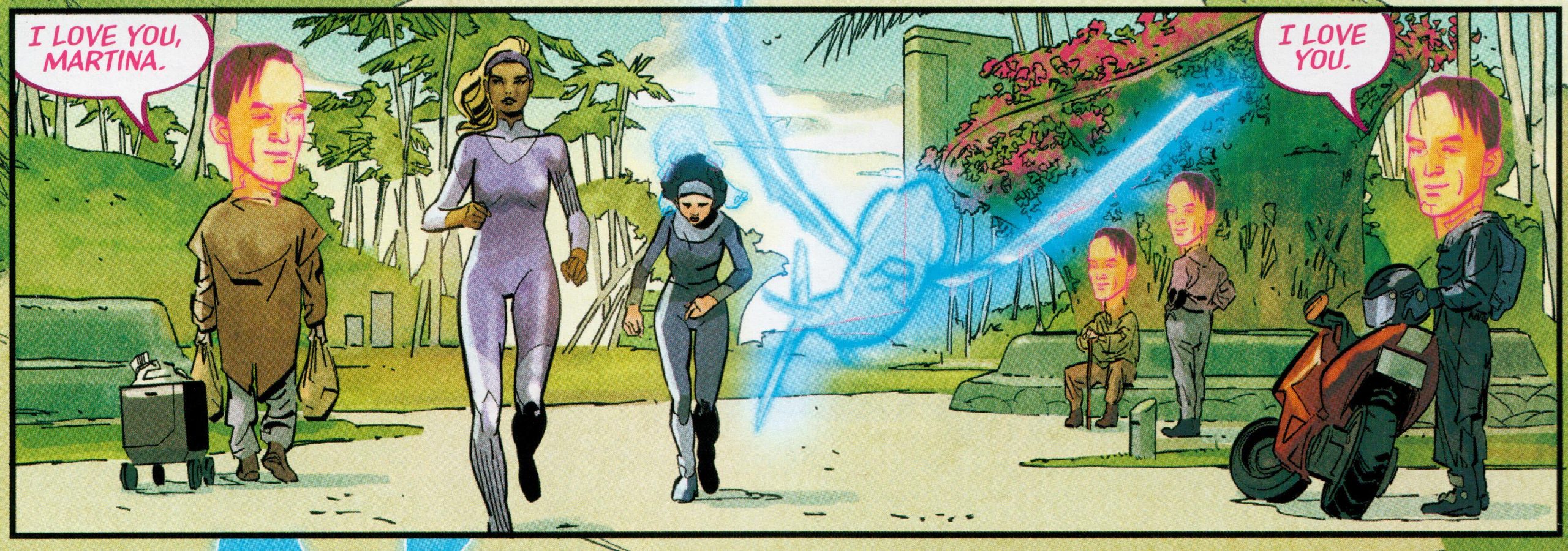
VAN LENTE: We had a bunch of conversations with the REKCAH people, with the Black Hills people about the kinds of things that they’re involved with in infosec, and one of the common requests they get is, people really wanna spy on their spouses. And it’s almost always husbands who want to spy on wives, and I decided to extrapolate that concept to this kind of horrific situation Martina finds herself in, where a spouse had the ability — I mean, “gaslighting,” famously, is from this movie, based on a play, about a husband who is manipulating his wife into thinking the gas isn’t on, when it is; so it’s sort of taking gaslighting to the most horrific example you can imagine, where one spouse is actually in total control of the other spouse’s reality. BUT, because we’re hopeful — we’re a hopeful operation here, Adam — Martina with the help of Wheeler managed to work herself out of that situation.
HILOBROW: That was one of two standalone origin-type issues the nice folks who promoted this book sent me a packet with; are those the same ones that are gonna be published, or were these unique to the Kickstarter?
VAN LENTE: They were not, so the first issue is a standalone graphic novel, and then the next arc actually dials the history back a bit and gives the origins of all the characters and how the team came to be. What you saw are the two issues that I believe will be Issues 2 and 4. The out-of-sequencing is, we wanted to get everybody to know the characters, but we also wanted to have a standalone adventure where they were all together at first. It’s kind of a unique thing, I think people will figure it out.
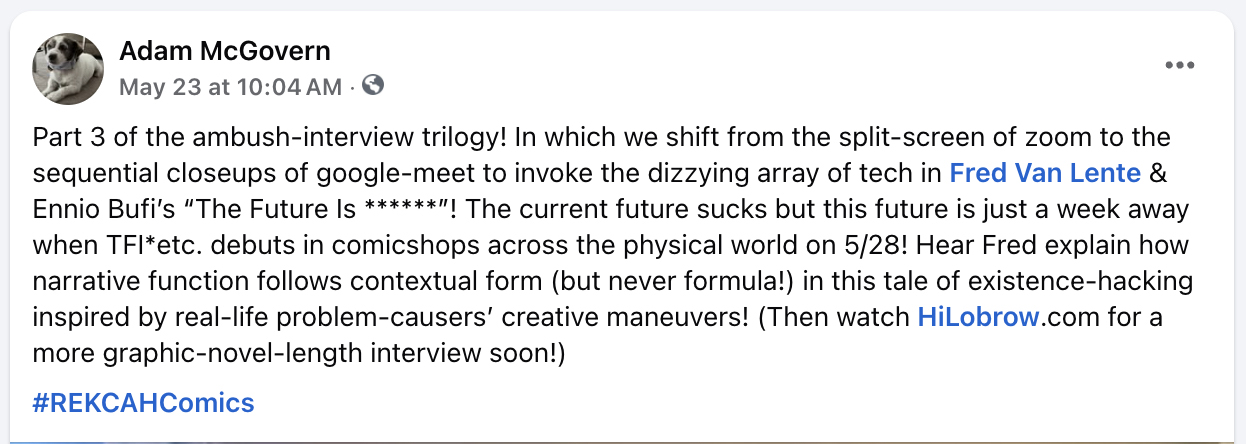
HILOBROW: How much are the characters’ arcs mapped out and personalities defined, and how much space are you leaving for them to surprise you?
VAN LENTE: I read a lot of Stephen King’s early books about how to write, and he always talks about the supremacy of story and I’m definitely like that; you can plot out the character all you want, but until they appear in a scene, that’s the “reality” of it; so it’s fun, each character kind of comes from a different aspect of hacking that I talked to the team about. And they — Sally, for example, who’s in her 70s, that came about because of the cliché that people who are younger are always good at computers. It’s not all the spunky teenagers who are skateboarding and doin’ the hacks [smiles]. And then, they had talked about someone who could flip in and out of a place and not really be noticed, and that’s kind of where Martina comes from, the idea that she’s… she’s an exceptional person by being good-looking and an Olympian, but she doesn’t really have any tech background; I wanted to have someone who could bring the “shut up, nerds!” kind of energy to it, sick of all this computer talk. And then there’s the idea of finding vulnerabilities in a system; that’s not the most uncommon comicbook-character trait, someone who can really pinpoint vulnerabilities accurately, but it also occurred to me that the sort of person like our Eli is would be incredibly anxious and paranoid [laughs], like, “I don’t wanna eat these ’cuz I know the exact chance I’d choke on this trail mix.”
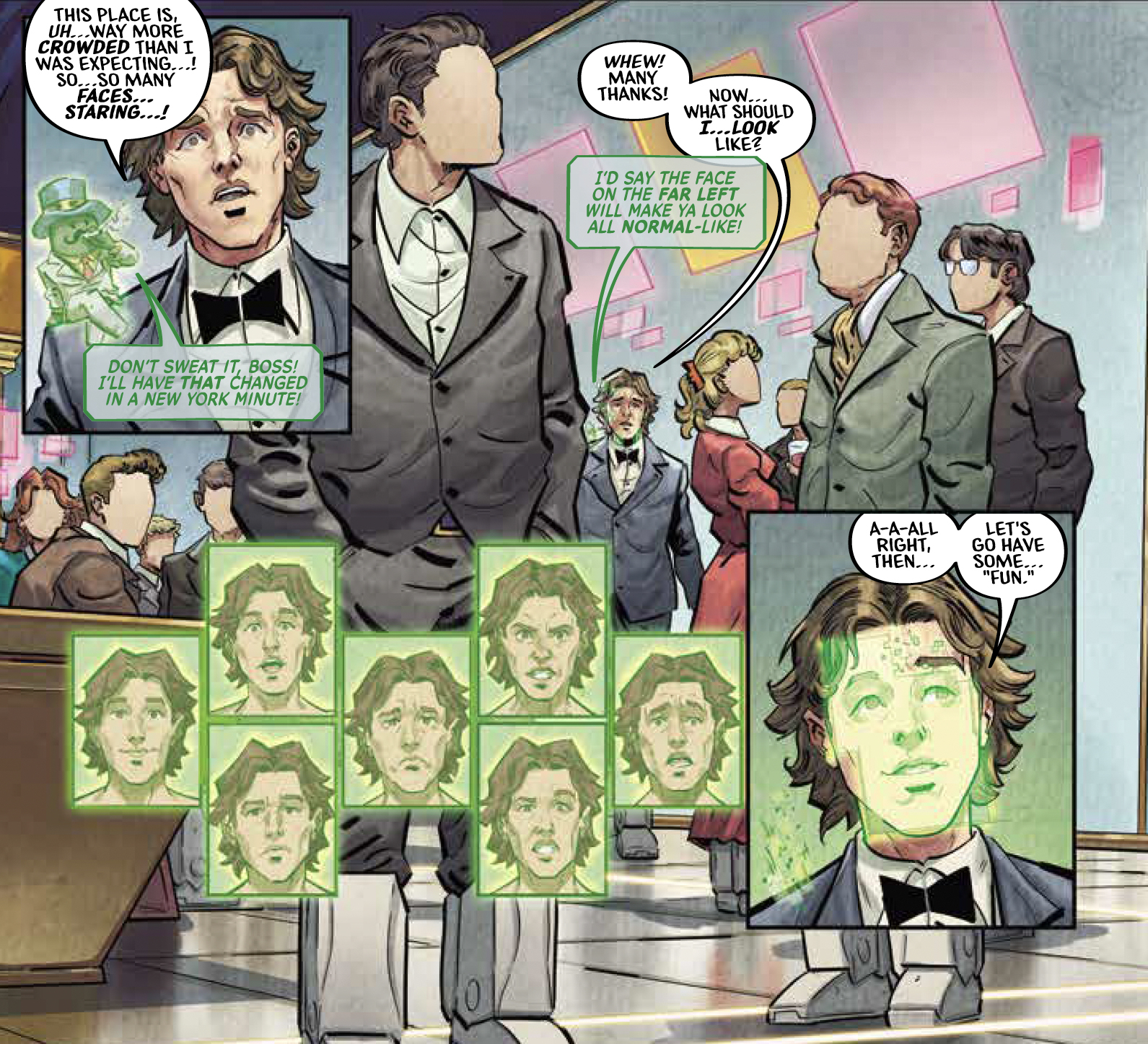
HILOBROW: [The character-profiles] raise an interesting question about how much of the… past of the future you’ll be delving into, because it’s fascinating—
VAN LENTE: Six issues! [laughter]
HILOBROW: …Being completely un-techy and having figured out none of the Capture the Flag games I admit, I play other mental games like figuring out what year we’re in based on what Wheeler’s frame of reference is, and based on Sally’s references, how old she might be; then again, they might be on some age-extender like we see in William Gibson things…
VAN LENTE: That’s true, all I can say… and this comes out later in the series, this isn’t really a spoiler, is that Sally was in high school now. So it’s kind of like whatever age you think Sally is — keeping in mind William Gibson-y age extenders — she was a teenager in 2025. That gives me the cheat of someone who can make anachronistic references that I and current-day readers will understand [laughs], as opposed to having everything be, y’know, made-up swear-words and weird references to nonexistent TV shows, band names from 2050.
HILOBROW: I may be wrong, but I get the feeling that Wheeler is the character we’re going to know the least about for the longest. I’m curious, to the extent that this doesn’t spoiler anything, if it’s a situation like Billy Butcher, forming his team in The Boys — that is, what the boss wants to do he actually could do on his own, which is burn everything down. I’m wondering if Wheeler has gathered people who he knows want to accomplish something more than revenge.
VAN LENTE: I have two answers, the first of which is it’s Issue SIX, Issue Six is when we find out Wheeler’s background [laughs].
HILOBROW: So is it too spoilery to comment on my psychological speculation about why Wheeler has drawn people together, has he convened this team because he thinks maybe they can reach a higher purpose than his own, which is perhaps to just to burn down systems indiscriminately?

VAN LENTE: You’re assuming that Wheeler has a noble reason for bringing all these people together, but there’s a villain who’s introduced at the end of [Issue 4] who has different opinions about that. That’s the problem when you’re as mysterious as Wheeler is; people can project their own opinions and theories as to what you’re doing onto you. At this point our heroes think he has a positive role; others not so much.
HILOBROW: There’s only a certain extent to which you can manipulate everything even if you think you’re holding the levers. On the subject of doing the right thing by unsanctioned means, hackers, I tend to think, are playing out a kind of real-life game of heroism, or at least action, in the systems they break into, but I have always wondered why there’s so many who are willing to steal my Kohl’s charge-card information and so few trying to make sure that both the U.S. and Russia’s nuclear silos are disabled or something… is The Future Is in some ways a parable to help socially engineer, what John Lewis probably wouldn’t have called, good crime? What really could be done with this kind of power if people choose to wield it?
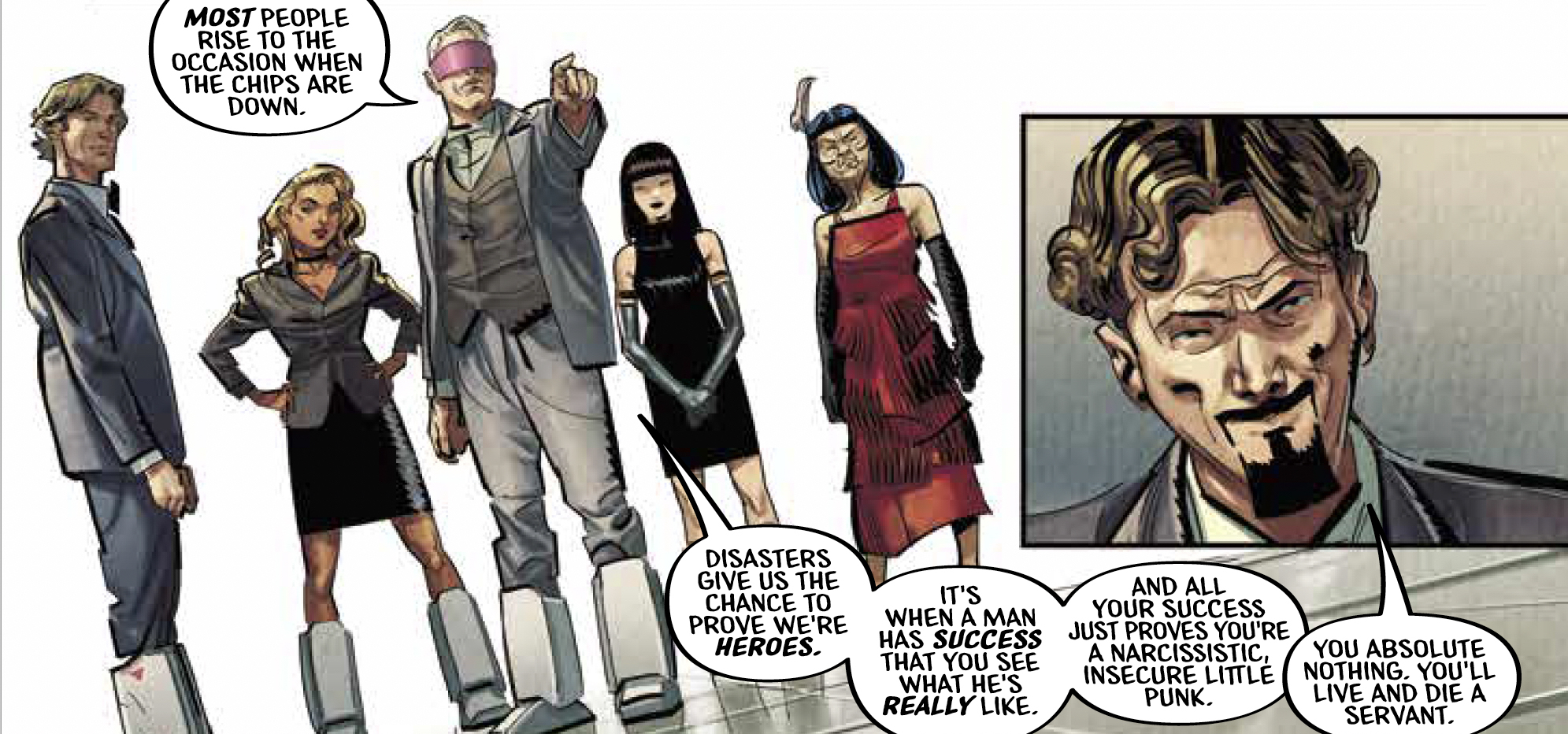
VAN LENTE: Well it’s the same sort of basic theory of superheroes, the old great power vs. great responsibility. It’s also, do we want one person to have that much power, what are they gonna do with it. I think a lot of guys who have this kind of power wonder what they could do if they didn’t have to sell it. Black Mountain, Wheeler’s operation, is this pro-bono operation, we don’t really know where his money comes from; that’s another source of paranoia about him throughout the series, is, everyone seems to live pretty well; no one’s going hungry; why? Where’s that money coming from? That might be an interesting question. But I, my whole life, I’ve kind of… I think it’s quite honestly why nerds and geeks gravitate towards the heroic mode of storytelling, because we’ve been bullied, we’ve been picked on, we want to see people with power act well and not badly, and so it’s always a real shame when you see tech people, who you assume are nerds and geeks, become the bullies. Now we’re on like a third level of anti-bullying, where Wheeler and his bunch are the ones going after the bad actors in the tech sphere; it’s like a triple reversal.
HILOBROW: As with the recurrent intro-line in the series about how “The hacker wars are over, and the black hats won”; well, not so fast… or maybe they did, or maybe the heroes are the black hats, I’m not sure.
VAN LENTE: All success and failure is temporary.
HILOBROW: Well said. Or well-quoted, I’m not sure. But either way.
VAN LENTE: I know I didn’t come up with it; I couldn’t tell you where I’m quoting it from.
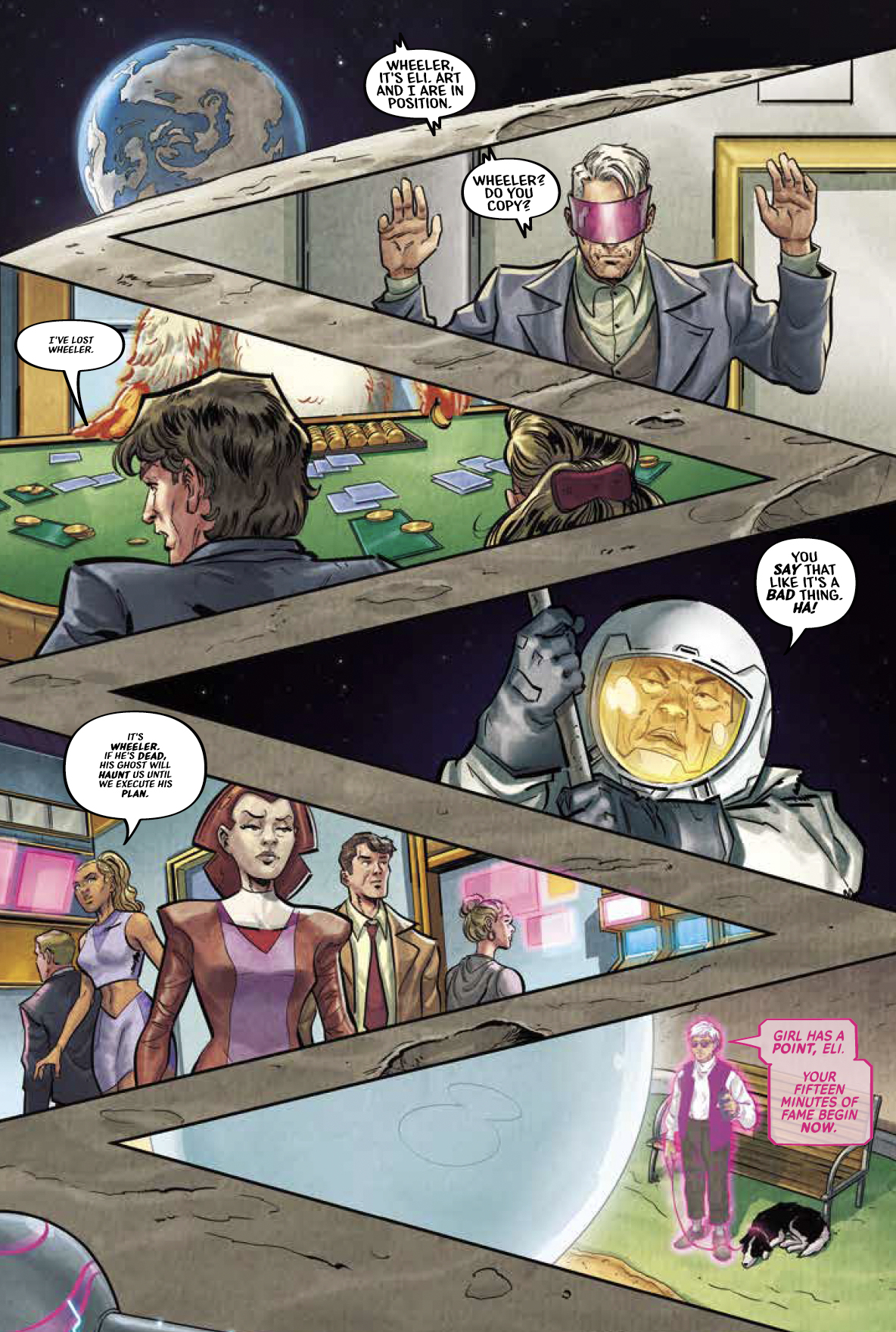
HILOBROW: [Adopts TV-news voice] Switching gears, because… I don’t have a segue, the world and era of TFI* is stylized perfectly to a kind of online-avatar, game-simulation aesthetic, while feeling like a very textured and believable extrapolation of what reality might look and feel like in a few decades’ time. How closely did you and the artist confer on the building and designing of this world, and are there ideas for more areas of it that his images have given you, or times when you’ve started to “write to” what you know he might come up with?
VAN LENTE: You’re referring to Ennio Bufi, who’s a terrific artist, and luckily for us is someone who’s not really known outside of Europe. So he is a real fresh look and I think people are reacting well to his style, and he, to my knowledge does not speak English, and I do not speak Italian, so the communication between us directly has been, well it’s honestly been nonexistent [laughs]. But, however he’s receiving the scripts, he’s running with them, and doing what is always the greatest joy as a comics writer, which is to have an artist who makes the material better; who runs with it and does stuff that I personally could not have thought of. So we’re working and meshing really well and the fantastic news is he’s going to stick around for a long time.
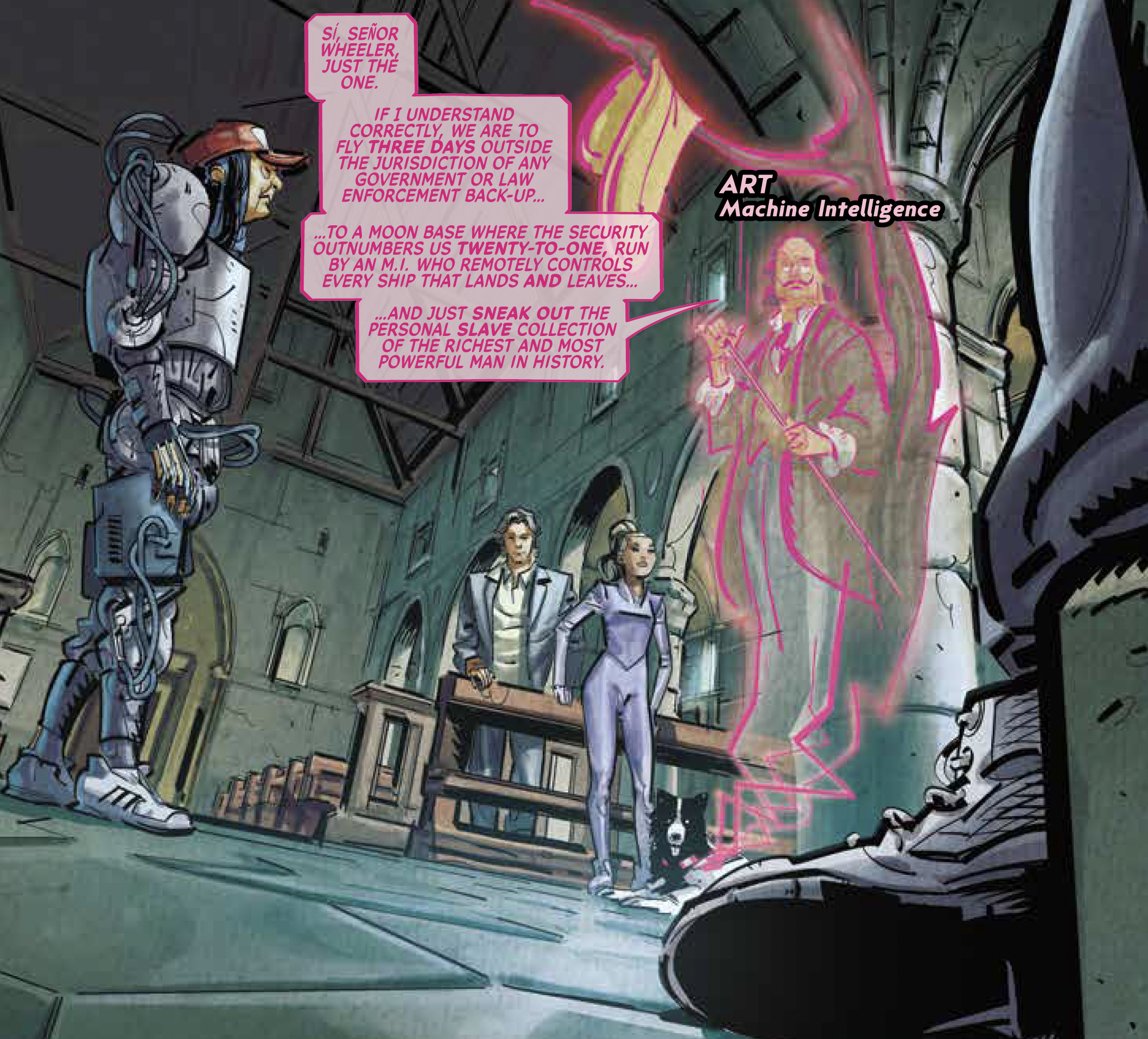
HILOBROW: Many creators have epic runs in their head if the series is lucky enough to run that long, though I think most tend to parcel it out in arcs that have their own singular or cumulative closure as they get the chance. There are few precedents for a commitment the scope of TFI* (I guess the only one that really comes to mind is Tom King’s hundred-issue guarantee on Batman, and even that wasn’t exactly guaranteed), so I’m curious how that affects your storytelling; or is it maybe just a difference of magnitude from any limited series you’d give a kind of novelistic structure to?
VAN LENTE: It’s slated to go 60 issues so that would be double my previous record. But fortunately it’s not like holding your breath [laughs] or running a marathon, it’s just more of the same. I just turned in Issue 19 last Friday. It’s chugging along nicely. Even though we know very broadly what each beat is, there’s plenty of room for me and the artist to improvise and go in different directions. Joe Keatinge, our fantastic editor — our Eisner-winning editor — he’s got a spreadsheet of all 60 issues, I call it “The Spreadsheet Is”; The Spreadsheet Is is very helpful, but it’s a guide, not a prison.
HILOBROW: I was wondering if it was a matter of “what story have I always wanted to tell across such a sprawling canvas”, or more “now that I’ve been given this space what story could I tell in it”.
VAN LENTE: When you’re in the trenches, this is the biggest cliché of all time but it’s just true, it comes down to the characters; the characters were conceived for the graphic novel and the origin stories, and we all like them so it’s like, where are those characters gonna go. So it’s not what do I, Fred, want to impose, or — this sounds like bullshit but it really isn’t; it’s not an opportunity for me, it’s an opportunity for the characters, where are they gonna go, what’s their story. Because at the end of the day, the readers care about Wheeler and Martina and Sally and Eli, and The Stray and all the other characters that end up getting sucked into their orbit. So that’s what’s exciting about it. Although it’s funny, one of the first podcasts I did for the series, the guy goes, “So if it’s successful, there’d be a… Sixty-one?”
HILOBROW: Well, now you go to a movie to see the post-credits scene, so… [laughter] One last question in terms of placing the tiles in the mosaic of The Spreadsheet Is; leaping into the future gives us the opportunity to backtrack, and you and Bufi are doing a brilliant job of that, rewinding to certain characters’ origins, or how they met, or flashing back to fragments of what motivates them. Have parts of this five-year narrative come to you out-of-sequence to begin with? Are you conceiving it front-to-back, or are there things that came into your mind that you’re gonna place later?
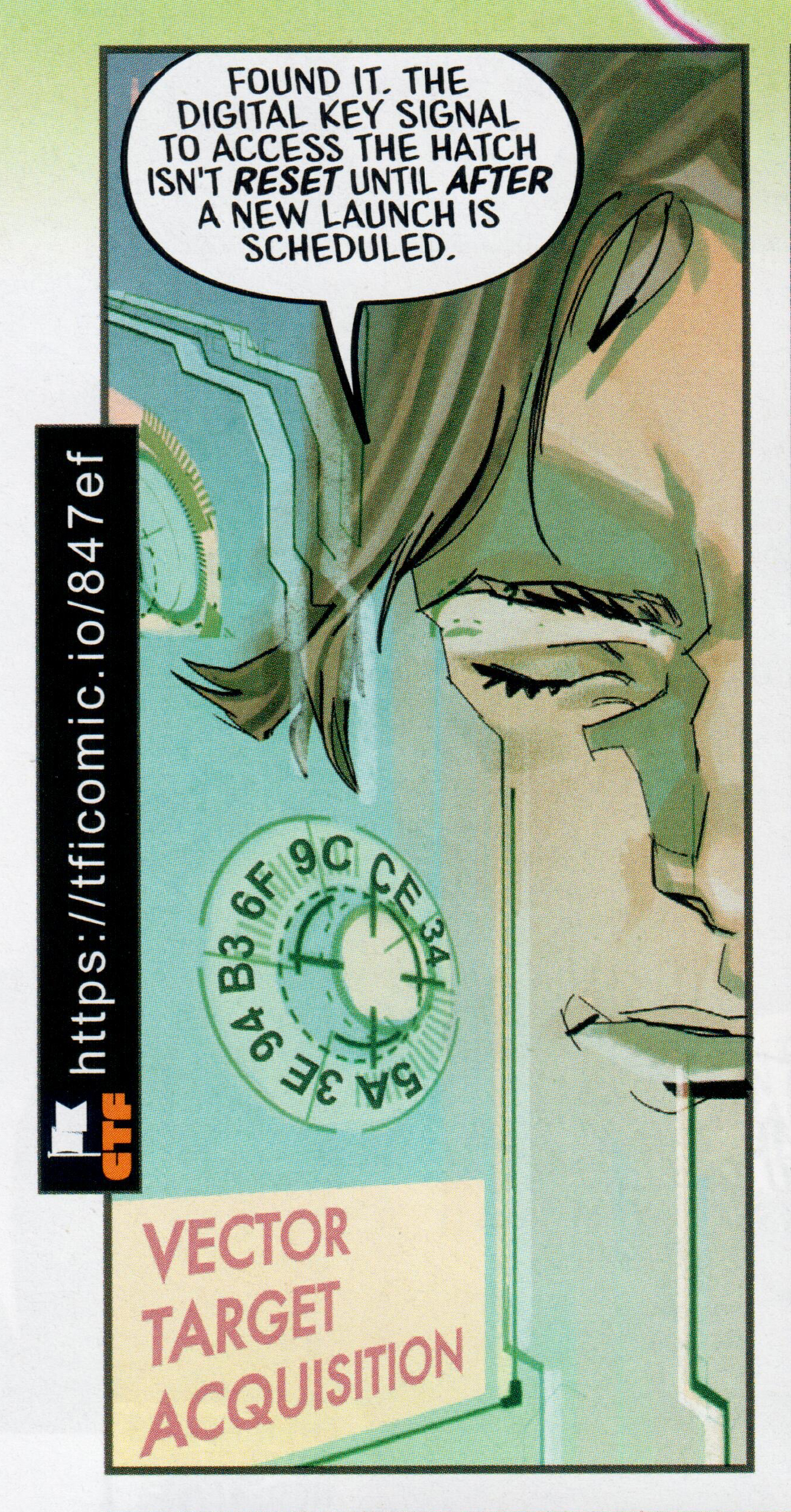
VAN LENTE: That would be a better question for 2026 Fred because at the moment I’m still working on the first four story arcs, which are pretty set. I actually count the first issue as a story arc unto itself, ’cause it’s over a hundred pages; and then there’s the origins story arc, and then there’s one called “Glass Heads” which is currently being drawn, and then there’s another storyline called… “Psychorapture”! and that’s mostly written also. So… it’s weird because the fourth arc is mostly done and I’m still basically just starting on the third one, so it’s been… a unique process. It’s semi-controlled chaos, is the best way to describe it.
HILOBROW: I look forward to it in every way… except for the stuff you told me to be scared of.
MORE POSTS by ADAM McGOVERN: OFF-TOPIC (2019–2025 monthly) | textshow (2018 quarterly) | PANEL ZERO (comics-related Q&As, 2018 monthly) | THIS: (2016–2017 weekly) | PEOPLE YOU MEET IN HELL, a 5-part series about characters in McGovern’s and Paolo Leandri’s comic Nightworld | Two IDORU JONES comics by McGovern and Paolo Leandri | BOWIEOLOGY: Celebrating 50 years of Bowie | ODD ABSURDUM: How Felix invented the 21st century self | KOJAK YOUR ENTHUSIASM: FAWLTY TOWERS | KICK YOUR ENTHUSIASM: JACKIE McGEE | NERD YOUR ENTHUSIASM: JOAN SEMMEL | SWERVE YOUR ENTHUSIASM: INTRO and THE LEON SUITES | FIVE-O YOUR ENTHUSIASM: JULIA | FERB YOUR ENTHUSIASM: KIMBA THE WHITE LION | CARBONA YOUR ENTHUSIASM: WASHINGTON BULLETS | KLAATU YOU: SILENT RUNNING | CONVOY YOUR ENTHUSIASM: QUINTET | TUBE YOUR ENTHUSIASM: HIGHWAY PATROL | #SQUADGOALS: KAMANDI’S FAMILY | QUIRK YOUR ENTHUSIASM: LUCKY NUMBER | CROM YOUR ENTHUSIASM: JIREL OF JOIRY | KERN YOUR ENTHUSIASM: Data 70 | HERC YOUR ENTHUSIASM: “Freedom” | KIRK YOUR ENTHUSIASM: Captain Camelot | KIRB YOUR ENTHUSIASM: Full Fathom Five | A 5-part series on Jack Kirby’s Fourth World mythos | Reviews of Annie Nocenti’s comics Katana, Catwoman, Klarion, and Green Arrow | The curated series FANCHILD | To see all of Adam’s posts, including HiLo Hero items on Lilli Carré, Judy Garland, Wally Wood, and others: CLICK HERE
